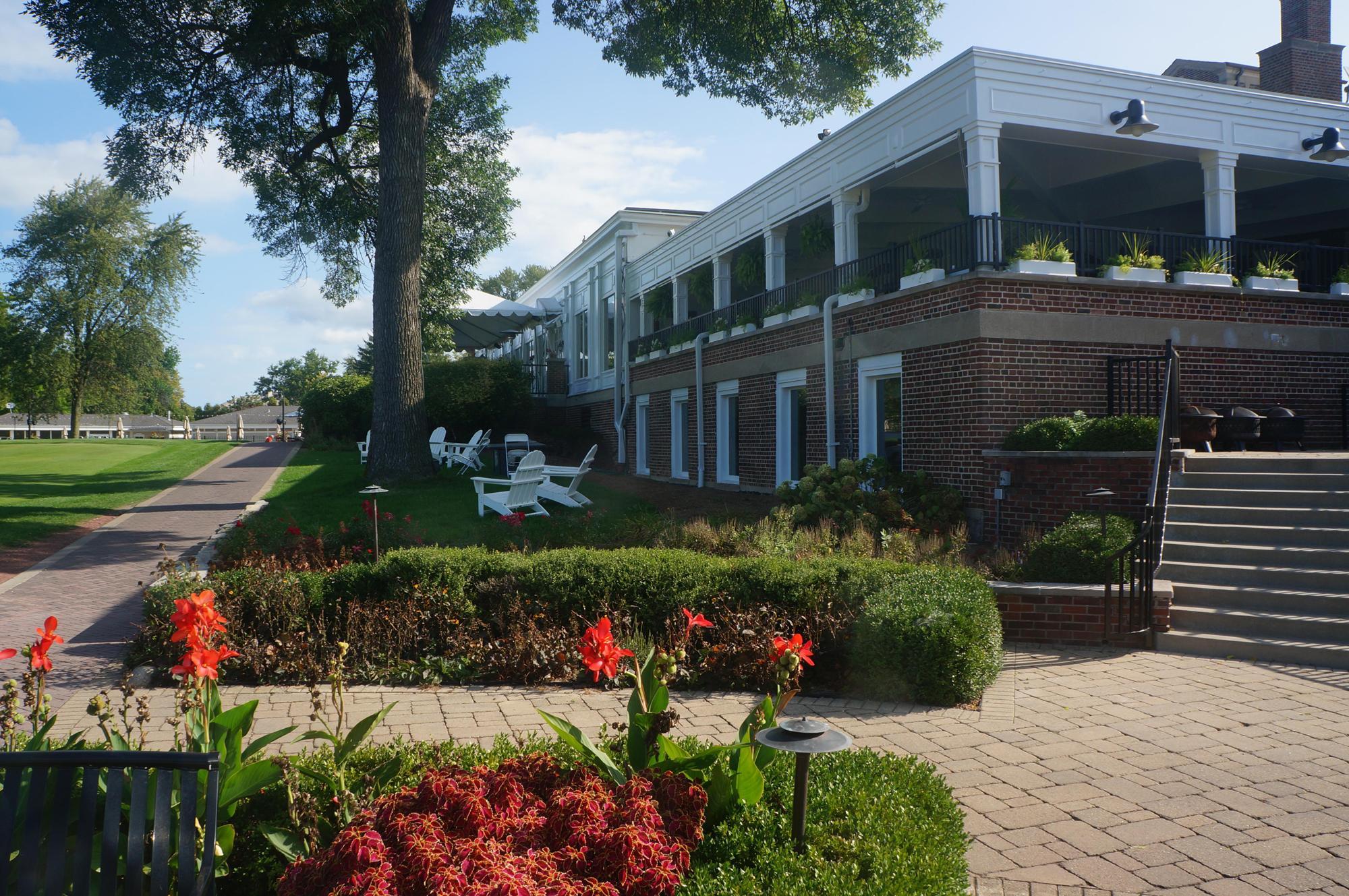The Golf Course
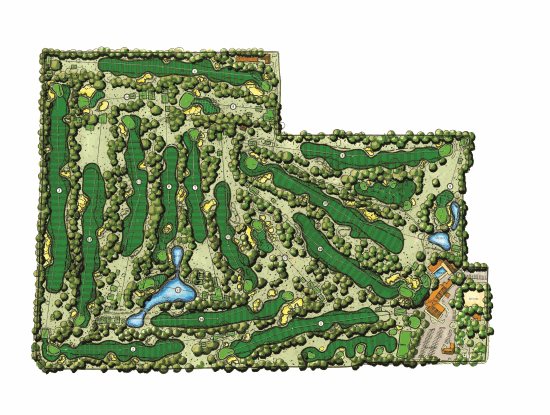
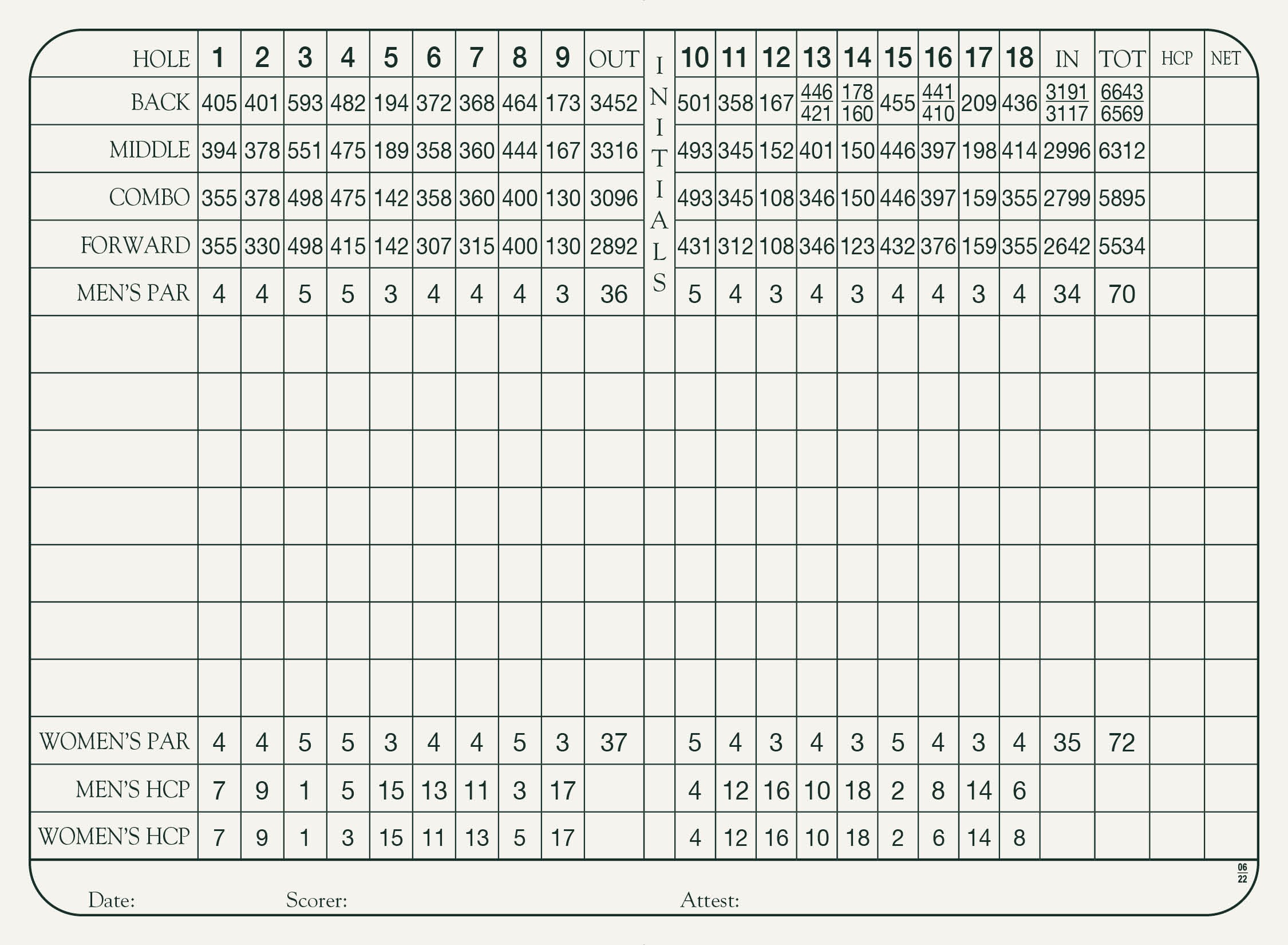

Hole #1
Men's Handicap: 7
Women's Handicap: 7
Hole 1
Par 4
The ideal first shot on hole #1 is to the right half of the fairway, avoiding the right fairway bunker. A tee shot right of the fairway ends up in a grove of mature trees, as does one pulled left. After a good drive, a mid iron approach shot must avoid left and right greenside bunkers. The green is one of the most difficult to putt whenever the hole lies on one of the ridge lines.
· 405
· 401
· 354
· 354
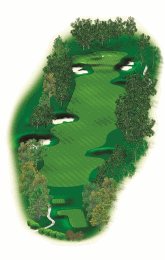
Hole #2
Men's Handicap: 9
Women's Handicap: 9
Hole 2
Par 4
Risk/Reward characterizes the playing strategy of this tricky par 4. The left rough borders out-of-bounds, with steeply faced bunkers just left of the fairway landing area. The approach shot may be run up, but balls hit over the green will rush down a slope and may wind up in bushes only fifteen yards beyond the green. The green is steeply sloped back to front, and putts from above the hole, when the hole location is in the front, can easily run off the green.
· 389
· 378
· 330
· 330
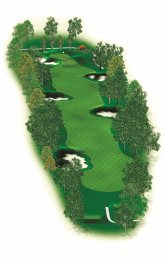
Hole #3
Men's Handicap: 1
Women's Handicap: 1
Hole 3
Par 5
This long par 5 is the number one handicap hole - and it deserves its ranking. Hole #3 is the only par 5 in the history of Park Ridge Country Club that has not relinquished a double eagle. Tee shots need to stay clear of the left fairway bunker. The ideal landing area is center to left center of the fairway. Long hitters may be tempted to reach the green in two, but this requires a lengthy shot and brings into play a steeply faced bunker on the right some sixty yards from the green as well as a steep greenside sand bunker and a grass bunker on right side. The green is narrow in front and steeply sloped in its first third, further complicating long shots from off the green and putts from behind the hole.
· 596
· 549
· 499
· 499
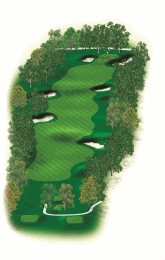
Hole #4
Men's Handicap: 5
Women's Handicap: 3
Hole 4
Par 5
In an unusual design feature, Park Ridge CC's course features two consecutive par 5 holes, but the character of #4 differs from that of #3, being some hundred yards shorter and tighter. Better golfers can play for birdie, but they will have to consider the tight out-of-bounds left that runs down the fairway and pinches in closer within ninety yards of the green, with greenside bunkers left and right. The front part of the green is steeply sloped, and chips from behind the green, or putts from the back, are very treacherous when the hole is placed front.
· 485
· 475
· 415
· 415
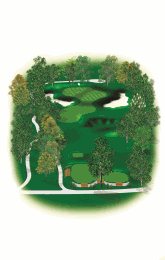
Hole #5
Men's Handicap: 15
Women's Handicap: 15
Hole 5
Par 3
This hole plays from an elevated tee into the prevailing west wind. Two huge sand bunkers are strategically positioned greenside, left and right. The green slopes left to right with a ridge positioned diagonally across it. Owing to numerous undulations, the 5th green offers many challenging hole locations.
· 194
· 189
· 147
· 147
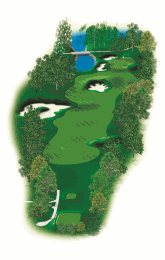
Hole #6
Men's Handicap: 13
Women's Handicap: 11
Hole 6
Par 4
The tee shot must avoid a long bunker to the left of the fairway yet be sufficiently left to allow an unrestricted shot to this green, which would otherwise be blocked by the huge stand of cottonwoods whose branches overhang the right third of the fairway. Long hitters may not need driver because of a bunker 90 yards from the green. Water on the left of the green as well as two left-hand greenside bunkers complicate shots onto this green whose reverse slope in its forward half makes it virtually impossible to stop balls that land in the front portion of the green.
· 372
· 358
· 307
· 307
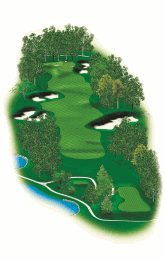
Hole #7
Men's Handicap: 11
Women's Handicap: 13
Hole 7
Par 4
Trees guard both sides of the fairway and accent the left-to-right dogleg aspect of the seventh hole. A wide and deep cross bunker on the right side threatens the shorter hitters, while three smaller bunkers running down the left side penalize the longer hitters whose drives stray slightly left. The approach shot is to a green that is narrow in front and flanked by two deep sand bunkers on the right, and a closely mown collection area on the left. A back hole location is treacherous and can leave the player whose approach shot is long, or to either side of the pin, a fast and sharply breaking putt.
· 370
· 350
· 315
· 315
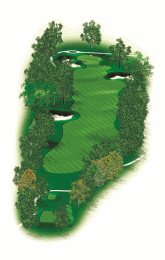
Hole #8
Men's Handicap: 3
Women's Handicap: 5
Hole 8
Par 4
This long par 4 is always one of the two holes with the highest average scores relative to par in both the Park Ridge Club Championship and the Champion of Champions Tournament. The hole plays shorter down the left side but with more potential for trouble: out-of-bounds and large leafy trees run down the whole left side, and a steeply faced bunker lies yards beyond that. The green slopes away from the golfer's left, and a front hole location on the steeply faced front third of the green can make for tricky putts.
· 457
· 444
· 400
· 400
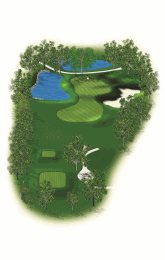
Hole #9
Men's Handicap: 17
Women's Handicap: 17
Hole 9
Par 3
The green is long and the hole locations can make for as much as a three-club difference, with difficulties in club selection compouned by winds that often swirl about this hole. The green is guarded by a large pond down its left side, and shots hit anywhere to the left are virtually certain to find a watery grave. The green is steeply sloped back to front, particularly in the first third, so shots hit behind a front hole location require considerable finesse to insure even a two putt.
· 173
· 167
· 135
· 135
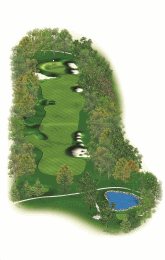
Hole #10
Men's Handicap: 4
Women's Handicap: 4
Hole 10
Par 5
Long hitters can challenge the high trees on the right side and attempt to fly the series of five bunkers just beyond them - a drive of some 250 yards. If the fairway is reached on such a long drive, a kind of downhill "speed slot" can carry the ball into position less than two hundred yards from the green. The approach shot is made more difficult by a large cross bunker fifty yards from the green and cutting across most of the fairway. Futher difficulties in the form of two large sand bunkers guard the right side of the green, which is large, with a pronounced hog-back design causing many three putts.
· 503
· 493
· 431
· 431
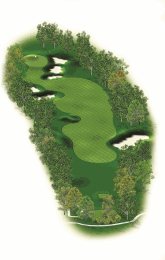
Hole #11
Men's Handicap: 12
Women's Handicap: 12
Hole 11
Par 4
When the water reservoir was dug in the 1950s, the landfill was used to elevate the green on 11, some twenty feet above the fairway, making it the highest hole on the course. Grassy mounds and fairway sand bunkers run down the left side, with tall trees just left of these hazards, so only the longest hitters will attempt to hit a driver into the narrow neck of the fairway. From most fairway locations, the second shot must be high and soft to carry the deep sand bunkers guarding the front and right side and yet hold the green. The green is steeply sloped back to front with a gentle roll left to right. Putts from the left side to a right-hand hole location can easily run some distance past the hole.
· 358
· 345
· 312
· 312

Hole #12
Men's Handicap: 16
Women's Handicap: 16
Hole 12
Par 3
The 12th hole is the course's signature hole, with a large poind situated between the tee and the green. Three deep and steeply faced bunkers frame the hole left and right, adding to its visual impact and increasing its difficulty. The green's front thrid is so steeply sloped back to front that tee shots hitting there wil usually roll back to the green's front edge. When the hole is tucked back and behind the left bunker, both the tee shot and subsequent putts are very treacherous owing to a ridge line running along the top portion of the green.
· 167
· 152
· 108
· 108
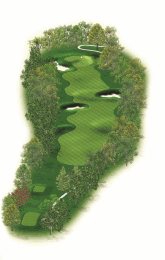
Hole #13
Men's Handicap: 10
Women's Handicap: 10
Hole 13
Par 4
The ideal tee shot is a light draw with placement in the center or right-center of the fairway. Cutting the dogleg is risky because of the parklands mounds and, beyond these, a large sand bunker protruding from the left side of the fairway. The approach shot should be a medium iron to a green guarded on the left by a sand bunker and on the right by a closely mown collection area that carries the ball away from the green. The green is medium-size and runs left to right, plus being fairly steep back to front, particularly in the back half.
· 421
· 407
· 346
· 346
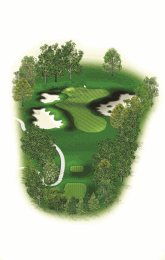
Hole #14
Men's Handicap: 18
Women's Handicap: 18
Hole 14
Par 3
Many players think of this hole as being a break before a series of tough closing holes commencing with #15, but hole 14 can also jump up and bite the golfer who is not careful. The green is protected by a Langford-designed cross bunker situated some thirty yards in front of the green that hides the center and left portions of the green from the tee perspective. The essentially flat green is further guarded by sand bunkers left and right.
· 178
· 160
· 123
· 123
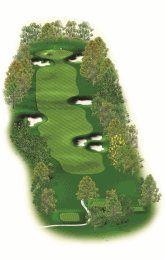
Hole #15
Men's Handicap: 2
Women's Handicap: 2
Hole 15
Par 4
In the original 1915 Bendelow/Langford course layout, hole #15 was a 460-yard par 5. In the 1950s it was changed to become the course's longest par 4. the hole demands a well-placed drive to the right side of the fairway, either left of or flying the right-hand side bunkers situated some two hundred yards off the tee. The approach shot with a long iron or fairway wood is difficult because the green is small and protected both right and short-left with steeply faced bunkers. The hole is sometimes played from an alternate teeing area about thirty-five yards to the right of the tee normally used.
· 454
· 446
· 432
· 432
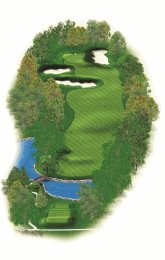
Hole #16
Men's Handicap: 8
Women's Handicap: 6
Hole 16
Par 4
Another strong par 4, hole #16 is the favorite test for many members. The tee shot is normally down-wind but must be straight and long. A long approach shot must carry a cross bunker that cuts across the fairway some eight-five yards in front of the green, while bunkers near to the green both front-left and -right penalize shots hit long but lacking accuracy. The green is steeply sloped back to front and side to side, so the possibility of a three putt looms in the golfer's mind, particularly when the hole is cut on the side of one of the slopes.
· 413
· 397
· 376
· 376
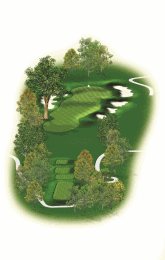
Hole #17
Men's Handicap: 14
Women's Handicap: 14
Hole 17
Par 3
Hole #17 is the longest of Park Ridge's five par 3 holes, demanding a long tee shot of between 170 to 215 yards to an open but well-bunkered green. A large cottonwood overhangs the left side of the fairway and catches many balls hit short left, with the long sand bunker just beyond that tree catching other errant drives. The green is steeply sloped, particularly in the back third, and a deft touch is necessary to insure two putts when the hole is located in one of many tricky spots.
· 209
· 198
· 159
· 159
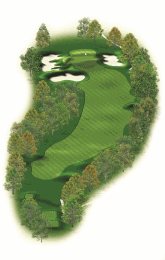
Hole #18
Men's Handicap: 6
Women's Handicap: 8
Hole 18
Par 4
Hole #18 is a classic double-dogleg, and one of the finest finishing holes in the Chicagoland area. A large grassy mound some 270 yards down the right side of the fairway poses a problem for longer hitters who stray right. The tee shot needs to favor the right side of the fairway to avoid overhanging trees. The second shot requires a long iron or fairway wood to a false-fronted green surrounded by deep sand bunkers. The green slopes back to front and features subtle breaks that take even skillful and experenced players years to master.
· 434
· 414
· 355
· 355

